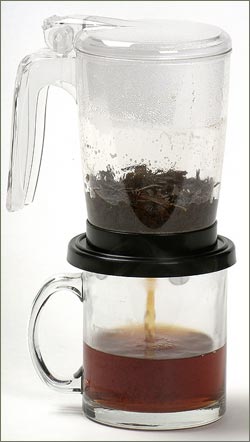So, we all know that tea is grow in a number of countries spread all over the world. India, Sri Lanka (Ceylon), Kenya, and China account for the largest portion of tea production, with a dozen or so additional countries producing smaller, typically domestically-used harvests. You'd be surprised where the Camellia sinensis plant can grow, actually; Australia, New Zealand, Argentina, and the United States of America are all suitable climates to grow tea.
Wait, what's that? The United States?
The America?
You bet.
Early in America's history, the Government wanted to free itself from foreign imports, especially those predominantly controlled by the British. They funded studies into finding the best place to grow tea in the country, eventually deciding upon a specific spot in South Carolina. A plantation was established, and even though it's changed hands a few times and moved a few acres away from its original location, America's only tea garden is still up and running today. Now run by Bigelow Tea,
the Charleston Tea plantation sells a line of teas under the American Classic label. If you're a tea drinker and are in the area, it seems like a fantastic place to visit. I hope to get down there myself in the near future.
But that's not all! Hawaii, not content to just produce coffee, has also begun producing tea crops. These can be a little harder to track down as there is no unified plant or large-scale farm, rather independent, often backyard growers working in co-op style arrangements. However, a few teas grown in Hawaii are available through some online retailers, like
Samovar.
Up until recently these were the only two locations I knew that grew tea. That is until I came across
Sakuma Bros, a family farm growing tea is
Washington State.
My world was rocked. So I order some as soon as their white variety was in-stock.
(Sorry for the cellphone camera quality.)
These are by far the most distinct teas I've come across yet. Their white tea is downright strange (in a good way); the leaves are sun dried, brown, and flat; the liquor is strong and tastes like bread (most white teas are light and grassy). The green tea is rolled tight like an oolong, and unfurls into large leaves. The taste is much more in line with what I've come to expect from oolongs, too. Lastly, their oolong is their most traditional, but done exceptionally well. An oolong of the highest quality I've encountered
and it's grown in my country? Good thing it's somewhat expensive because I'd be taking a bath in it.
If you have the spare money, you must order some Sakuma Bros. tea. There are no reservations attached to my recommendation. We do big things here in the U.S.A.










